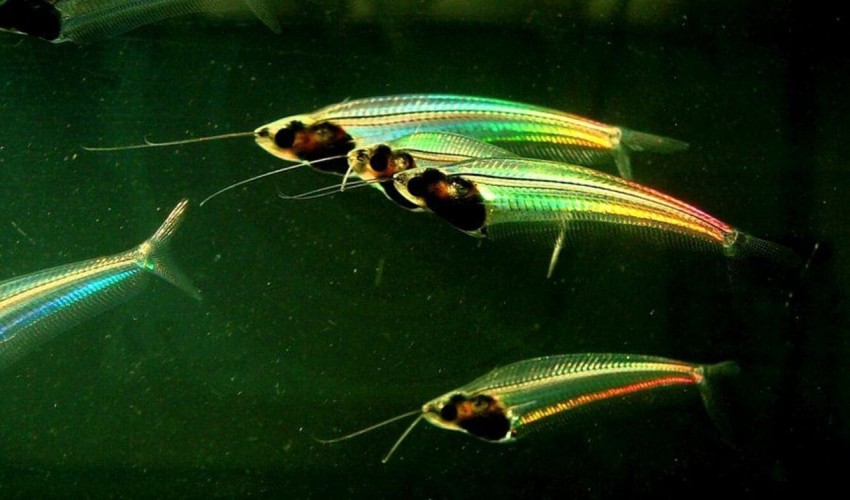Agriculture Science
17
White light provides a rainbow effect on this otherwise clear fish. Now we understand why
- Rating
- catfish
- fish
- translucent
- iridescence
- freshwater
- aquatic
- aquarium
The ghost catfish's muscles have a pattern of repeating structures that scatters light.
As white light shines through the ghost catfish's almost see-through body, it goes from translucent to shiny and glamorous. This has been explained by recent scientific research.
Light is bent when it passes through small striped structures in the fish's muscles, leading to its iridescence, as reported by scientists on March 13 in the Proceedings of the National Academy of Sciences.
Iridescent fish are common because their skin or scales contain microscopic crystals that reflect light (SN: 4/6/21). In contrast, the ghost catfish (Kryptopterus vitreolus) and other transparent aquatic species, such as eel larvae and icefishes, have no such structures to account for their iridescence.
The ghost catfish's transparent body drew physicist Qibin Zhao's attention at an aquarium shop. The freshwater fish is around 5 centimetres in length and is a common decorative choice. According to Shanghai Jiao Tong University professor Zhao, "I was standing in front of the tank and marvelling at the fish." The iridescence only became apparent afterwards.
To learn more about the fish's vibrant hues, Zhao and his team first observed it in a variety of settings. Light transmission, rather than reflection, was blamed by the scientists for the fish's iridescence. When the researchers used a white light laser to illuminate the animal's muscles and skin independently, they saw that the muscles were responsible for the rainbow reflection.
The researchers analysed the muscles by looking at them under an electron microscope and studying the X-rays' scattering characteristics as they passed through the tissue. The researchers determined that the iridescence originated in sarcomeres, which are banded structures around 2 micrometres in length that run the length of muscle fibres at regular intervals.
The sarcomeres' repeating bands, made up of proteins with varied degrees of overlap, distort white light in a manner that highlights and emphasises its constituent colours. When light scatters, it creates a rainbow of hues. The length of the sarcomeres gradually changes as the fish swims, creating a dynamic rainbow appearance.
Heok Hee Ng, an independent ichthyologist from Singapore who was not involved in the current research, argues that the function of the ghost catfish's iridescence is unknown. He claims ghost catfish prefer dark, muddy environments and seldom use their eyesight. Yet, he adds that the iridescence may assist them conceal from terrestrial predators, such as birds, by making them mix in with the shimmering water.
Ng is glad that researchers are looking into the ghost catfish's peculiar traits because he thinks they're fascinating no matter what purpose they serve.
Quite a few "interesting structures" that "serve them in numerous ways" are found in fish, he explains. "And many of these structures have been investigated just superficially.
CITATIONS
X. Fan et al. Light diffraction by sarcomeres produces iridescence in transmission in the transparent ghost catfish. Proceedings of the National Academy of Sciences. Published online March 13, 2023. doi: 10.1073/pnas.2219300120.
Leave a Reply
Your email address will not be published. Required fields are marked *


